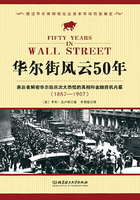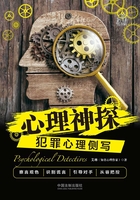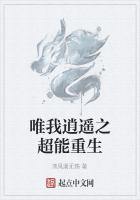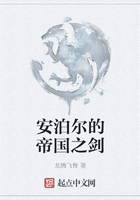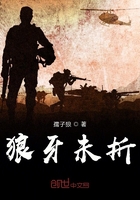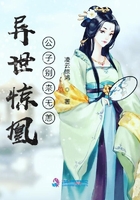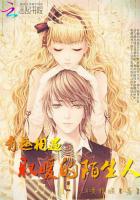The decrease in land size per tenant farmer is not the only measure by which to detect more intensive labor input. Given the number of tenant farmers working on a fixed area of land, labor input may be increased by working more days in a year and longer hours per day. Before the share restriction it was reported that the "income from farming was often insufficient to cover living expenses and the tenant farmers depended on additional income from off-farm employment."[8] Off-farm employment was also frequent after the Land-to-the-Tiller program in 1953, but by then the tone had changed to "numerous changes have occurred in farmers' social status, ... to shift labor off farm or use more labor in sideline works."[9] During the period 1949-51, however, it was reported that "the rent reduction… greatly encouraged the tenants, to the extent that not a single one did not work his best to increase production."[10] And in a village with 140 tenant households, "seven of them built new houses, twenty of them took time to repair the fields.…"[11]
[1]. For the erratic crop yields from 1942 to 1946, see Sino-American Joint Commission on Rural Reconstruction, Taiwan Agricultural Statistics, 1901-1955 (Taipei: 1961), notably the rice yields on pp. 20-21. It was not until 1948 that the prewar level of production was generally restored. As is indicated in the last chapter, for the year 1952 we are not certain of the actual method of crop sharing. Since 1953, not only has the massive Land-to-the-Tiller program been enforced, but fertilizers and irrigation have been heavily subsidized by the government. See Tsung-han Shen, Agricultural Development on Taiwan since World War II (New York: Comstock Publishing Associates, 1964); Office of Economic Policy, "The Taiwan Fertilizer Industry," mimeographed (U.S. AID Mission to China,1962); and E. L. Rada and T. H. Lee, Irrigation Investment in Taiwan (Taipei: JCRR, 1963).
[2]. See Shen, Agricultural Development on Taiwan, chap. 19.
[3]. See chapter 8, table 3, column 6.
[4]. See chapter 8, table 4, column 1. See also sources for table 2.
[5]. See chapter 5, section C.
[6]. See JCRR, "JCRR Annual Reports on Land Reform in the Republic of China," mimeographed (1965), p. 47. During 1948-50, about 6 percent of the total cultivated land was leased to tenants under state ownership, and the rental charge was reported to be one-fourth of the annual yield. But the determination of land size and the number of tenants involved are not on record. Part of this public land was sold to tenants in 1951, contributing partially to the notable jump in owner farmers (table 2, column 2) and the further decrease in tenant landholding from 1950 to 1951 (column 8). Of the lands under private ownership, sporadic evidence in various locations indicates that tenant farms had been slightly more labor-intensive than owner farms owing to the higher number of paddy fields under tenancy. See Department of Agriculture and Forestry, Taiwan Agricultural Yearbook, 1951 Edition (Taiwan: Provincial Government, 1951), sees. 1 and 2.
[7]. Information available includes only the number of tenant households affected, not the number of tenant farmers in these households.
[8]. T. H. Lee, "Impact of Land Reform on Agricultural Development and Rural Employment in Taiwan," (JCRR mimeograph 63-RED-M-176), p. 2.
[9]. Ibid., p. 6. After 1953, various reports indicate that a farmer rarely used more than two hundred days in a year for farm work, depending on the size of the farm assigned by the government. See Arthur W. Peterson, "An Economic Study of Land Use in Taichung Hsien and City, 1960," mimeographed (Tai-chung: Research Institute of Agricultural Economics, Chung Hsing University, 1961); Committee on Census of Agriculture, General Report on the 1961 Census of Agriculture (Taipei: 1963); and Nien-tsing Lu, An Analysis of Farm Family Economy of Owner-Operators under the Land-to-the-Tiller Program in Taiwan (Taipei: The Research Department of the Land Bank of Taiwan, 1965).
[10]. Cheng Chen, Records of Taiwan Land Reform (Taipei: Chung Hwa Book Company, 1961), pp. 37-38.
[11]. Ibid., pp. 39-40. For other similar examples see sources cited in chapter 1, section B.
B.Qualitative and Quantitative Changes in Fertilizers and Other Inputs
Observations regarding fertilizer inputs under the share restriction noted the conversion from farm-produced fertilizers to commercial fertilizers. The latter, admittedly, cost more but are more effective.[1] Under a free market, the quantity and quality of ferti-lizers applied —whether committed by the landowner or by the tenant —must be consistent with the maximization of rental annuity. Under the share restriction, however, it is to the landowner's interest, and competition will require, that the tenant use higher-cost fertilizers if a higher annual yield is thereby obtained.
Measured in total quantities consumed, with 1948 as the base year, commercial fertilizers increased by 18.6 percent in 1949 and 120.5 percent in 1950, with the quantity consumed in 1951 approximating that of 1950.[2] On the other hand, farm-produced fertilizers decreased by 8.4 percent in 1949 and 13.5 percent in 1950, with the quantity consumed in 1951 approximating that in 1950.[3] Among commercial fertilizers, mineral fertilizers increased by more than two and one-half times for the same period; vegetable fertilizers increased by about one-third in 1950 and decreased thereafter; and animal fertilizers, which had been used only in small quantities, declined.[4] For the same quantity, mineral (chemical) fertilizers are generally the most costly of all, and are regarded as the most effective.[5]
In the period 1948-50, the most significant decrease in farm-produced fertilizers occurred in burned soil, which dropped by 50.1 percent. This was paralleled by a correspondingly large increase in commercial mineral fertilizers. Another notable decrease occurred in green manure, which declined by 45.1 percent, and was replaced by commercial vegetable fertilizers.
Besides burne i soil and green manure, other farm-produced fertilizers such as animal manure, rice hull, ash, straw, and human manure decreased slightly.[6]

